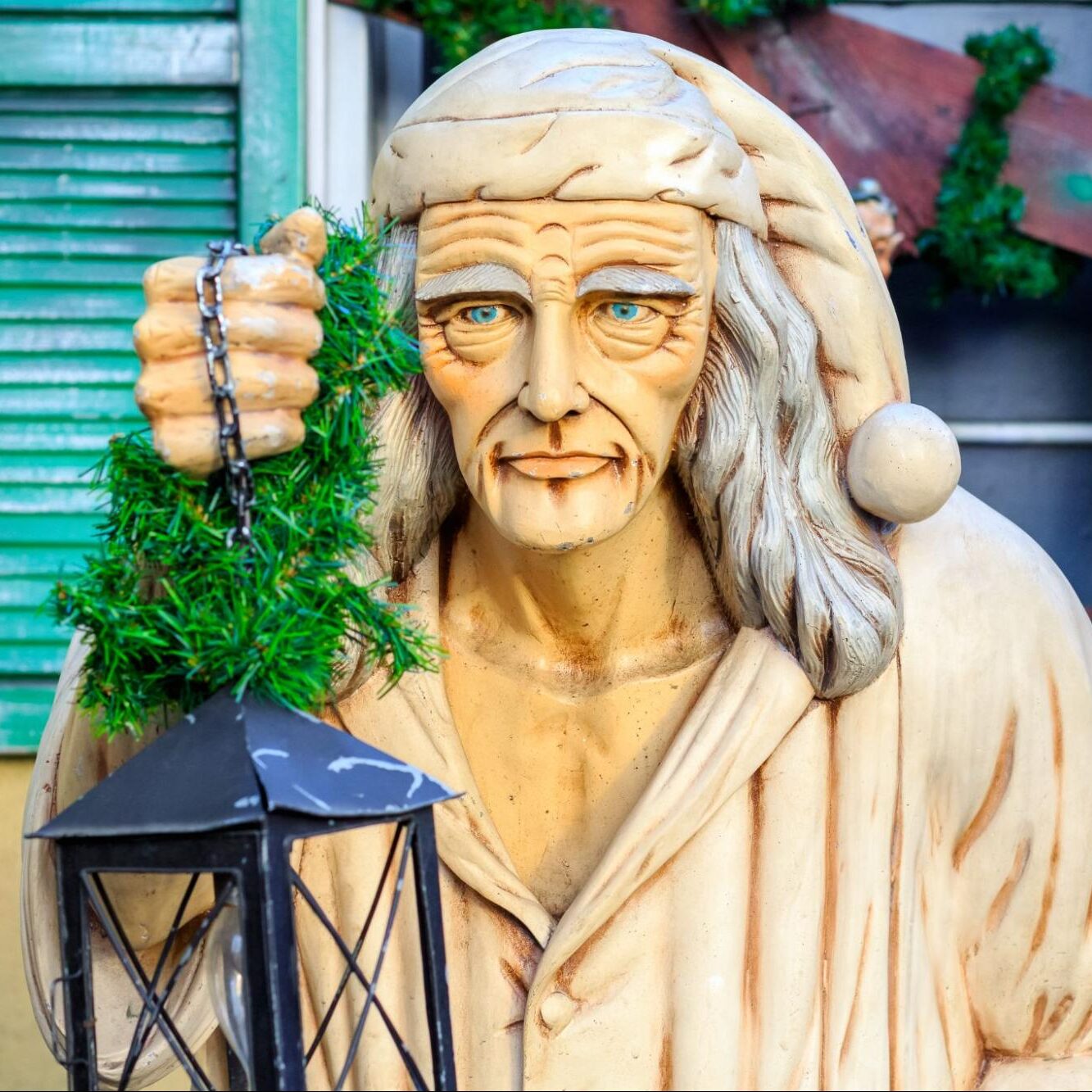
Christmas: the ultimate behaviour change campaign
By Livvy Drake

As Bill Nighy sang “Christmas is all around, and so the feeling grows”.
But how did our Christmas traditions become so embedded in society?
Behavioural science can shed some light on some of the reasons. And there are lots that we can learn, for our own pro-environmental campaigns, from how successfully Christmas traditions have been adopted.
I’m sharing some of the insights I found from my research on this very topic:
Bundling

Historically, the Christians did a bit of “jiggery pockery” with the truth and realigned Jesus’ birth with the pre-existing winter Pagan rituals. In reality, Joseph and Mary wouldn’t have been travelling to Bethlehem for a census in the midst of winter, it would have been in the spring.
So what the Christians did was bundled their celebration with the pagan festivals so it was easier for people to adopt.
Bundling can be done with lots of behaviours, behavioural scientists have added soap to chalk so children wash their hands with it, in the Global South.
Applying to your campaigns
Look for actions in a routine where something can be added in easily e.g. bundling low-carbon travel with exercise – cycling to work. Or including a service with a pre-existing one e.g. refill washing liquids with the milkman.
Authority bias and trusted messengers

The dressing of trees on the 24th was originally linked with a celebration of Adam and Eve, in Germany.
The Christmas tree was brought from Germany to the UK by Prince Albert, the husband of Queen Victoria.
When a new behaviour appears, people look to trusted messengers and those in authority (authority bias) to check if a behaviour is appropriate. This is why dentists are used to promote toothpaste!
Applying to your campaigns
These days, King Charles or royalty may not be the ideal trusted messenger for your campaign. Research shows that young people trust influencers more than famous people. And in fact, for many people it is their peers that they look to for reassurance of accepted behaviours. The Edelman Trust barometer shows that Coworkers, CEO’s and people in the local community are some of the most trusted people.

Social contagion, mere exposure & social contagion

As a very visible symbol of Christmas, the Christmas tree tradition has also benefited from social proof and social contagion.
The social proof comes from seeing a tree up in people’s windows, demonstrating that other people are doing it. The more we see something, the more attractive it becomes to us (mere exposure effect), which leads to social contagion.
Social contagion has benefited solar panel adoption by neighbours seeing others having them. Recycling has also been found to be done because it is a social norm, due to the visibility of curbside recycling in the UK, and wanting to mirror what neighbours are doing.
Applying to your campaigns
In order to make your behaviour the social norm, people need to know other people are doing it, so visibility is key and talking about people doing it. To create social contagion, you need to make your behaviour visible repeatedly with people carrying it out – finding something symbolic is helpful.
Activating positive memories and emotions

Christmas music and smells tap into our senses, bringing back memories and nostalgia.
Research has shown that shops with both holiday smells and music were likely to be evaluated more positively than those with none of those elements.
If these smells remind us of childhood, it can lead to feelings of nostalgia which, according to research, makes people more optimistic about the future.
Our brains use memories as a mental shortcut to decide if we want to repeat a behaviour. If we have positive memories we are most likely to repeat it. Conversely, if we remember something as difficult or hard or complicated, we don’t want to repeat it.
In terms of memories, we also tend to only remember the peak and the end of an experience (known as the peak-end rule), which means that even if there were some minor family fallouts at Christmas, these can be forgotten if there were positive peaks and endings (or of course the converse – the good times will be forgotten by negative peaks and endings).
Applying to your campaigns
When someone is first starting a new behaviour, the memories they create from this will inform their likelihood to repeat it, so make sure it is as enjoyable as possible and focus on a positive peak and endpoint.
Focusing on the endpoint could include sending them a follow-up message to thank them for their actions and make them feel good about themselves. This means when they come to recall the behaviour, they will remember the warm glow from your positive reinforcement.
Stories

Christmas is the season for stories: Jesus’ birth, A Christmas Carol, Father Christmas and Rudolph, Bambi. And many of these stories have been designed to reinforce the desired behaviours of Christmas e.g. being generous Mr. Scrooge.
According to Crobox, “Christmas stories commonly feature themes such as kindness, charity, gratitude, love, and hope. And because of the persuasive nature of stories, these themes are often induced in their audience. This happens through a process called transportation. This psychological process describes how submerging into a story influences individuals’ attitudes, intentions, and behaviour”.

John Lewis knows the power of stories and use emotive stories in their Christmas advertising campaigns, to increase spending. In studies emotion-based advertisements show higher uptake when compared to those which are information-driven, demonstrating that this tactic works.
Stories are not just for Christmas, they have been the medium with which we have made sense of the world, for centuries. e.g. Greek myths, the bible, fables have all been ways to teach what other people are doing or not doing, and what is accepted behaviour.
Applying to your campaigns
Telling stories of people doing the desirable behaviours, and how they overcome some form of adversity or challenge is a much more powerful and memorable way of inspiring people to action than stats and facts. Telling your own story is always a good starting point, as well as finding case studies from people relatable to your audience.
These are just a few of the human motivations and drivers that Christmas taps into. So for those asking people to change their Christmas habits and traditions it is worth being mindful of the power of these. Check out this blog on Reframing a Zero Waste Christmas campaign due to the importance of Generosity.
Give the gift of behavioural science to your campaign!
Buy an on-demand workshop on behaviour change theory for more practical insights to make your campaigns more effective in 2024.



